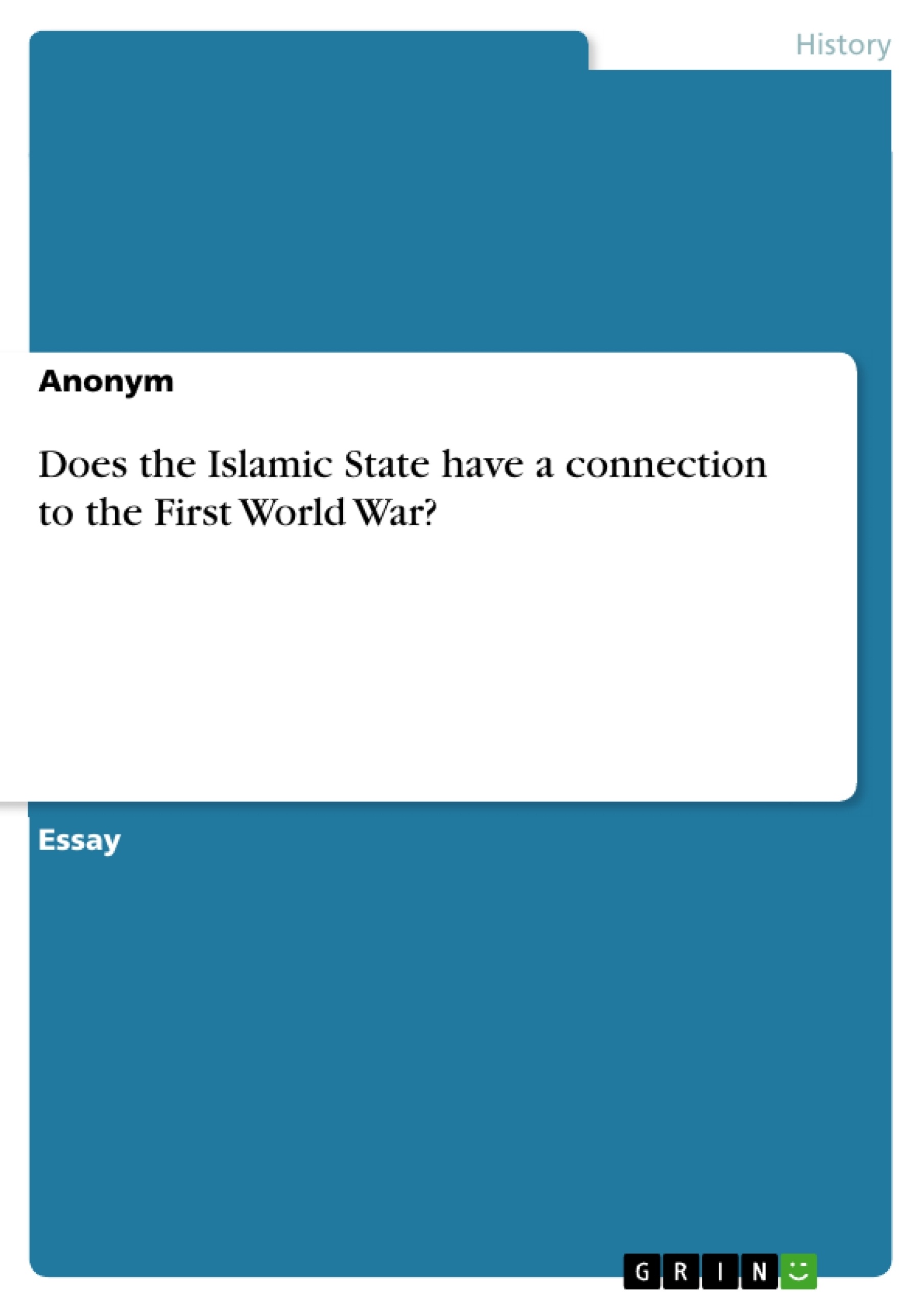To understand the foundation of the Islamic State it is of major importance to analyse the history of the relation between Europe and the Middle East. Since the foundation of the Islamic State (IS) on June 29 in 2014, analysts and historians debate about the origin and aims of it. Therefore, in the second step of this essay I will demonstrate the history of the Middle East by focusing particularly on the First World War as a starting point.
Inhaltsverzeichnis (Table of Contents)
- Historical context "The past that will not go away"
- Analysis of the Islamic State
Zielsetzung und Themenschwerpunkte (Objectives and Key Themes)
This essay critically examines the Islamic State, its origins, and its motivations, focusing on the historical context of the Middle East, particularly the First World War and its aftermath. It delves into the ideological underpinnings and propaganda of the Islamic State, exploring its claims of a return to Islamic sovereignty and its rejection of Western influence.
- The historical development of the Middle East, with an emphasis on the role of the First World War
- The rise of the Islamic State and its ideology of restoring Islamic dominance
- The Islamic State's propaganda and its appeal to Muslims worldwide
- The Islamic State's rejection of Western influence and its vision for a new Islamic order
Zusammenfassung der Kapitel (Chapter Summaries)
Historical context "The past that will not go away"
This chapter traces the historical development of the Middle East, focusing on the region of Mesopotamia (modern-day Iraq). It highlights the role of the First World War in shaping the political and cultural landscape of the region, emphasizing the betrayal of Arab nationalist hopes by the Sykes-Picot Agreement, which divided the Ottoman Empire into French and British mandates. The chapter also explores the rise of ethnic and sectarian tensions within Iraq after its independence, leading to the emergence of power vacuums exploited by radical groups like the Islamic State.
Analysis of the Islamic State
This chapter examines the Islamic State's ideology and propaganda, focusing on its early publications, such as the first issue of "Dabiq." It analyzes the group's justification for its actions, its call for a return to Islamic sovereignty, and its rejection of Western influence. The chapter also highlights the Islamic State's promises to Muslims who join its ranks, emphasizing its appeal to those who feel disenfranchised and humiliated by the current world order.
Schlüsselwörter (Keywords)
Key themes and concepts explored in this essay include the Islamic State, Middle East history, the First World War, the Sykes-Picot Agreement, Arab nationalism, Islamic ideology, propaganda, jihadism, and Western influence.
- Quote paper
- Anonym (Author), 2016, Does the Islamic State have a connection to the First World War?, Munich, GRIN Verlag, https://www.grin.com/document/370949



